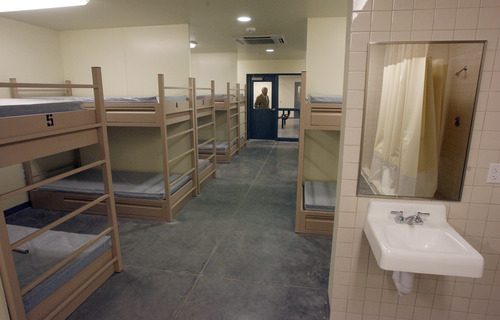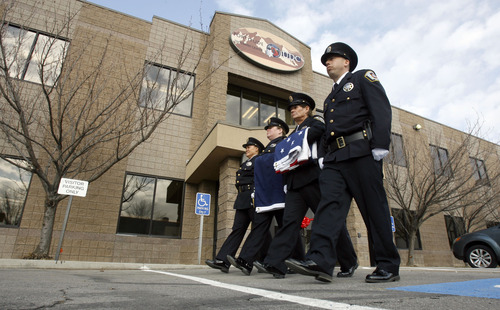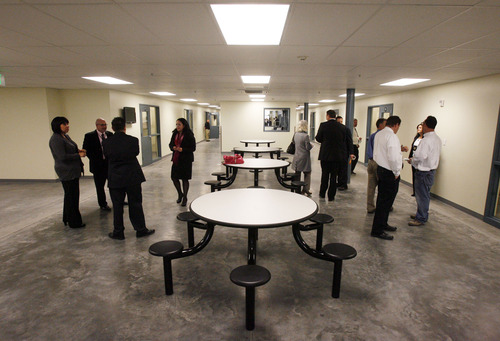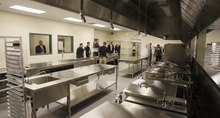This is an archived article that was published on sltrib.com in 2012, and information in the article may be outdated. It is provided only for personal research purposes and may not be reprinted.
A five-year effort to establish a center that may help keep parolees from returning to prison is nearly complete.
The Fortitude Treatment Center will begin accepting its first clients within a couple weeks, with room to accommodate up to 300 male parolees who are relapsing or otherwise struggling to comply with conditions of their release such as avoiding alcohol and holding a job. It is the first such facility in Utah, and corrections officials and government leaders have high hopes for its success.
"It is a stake in the ground in the philosophy of redeeming people," said Utah Lt. Gov. Greg Bell on Wednesday at a flag-raising and open house for the new center. He added that the center is the culmination of "a lot of good thinking."
The center, funded by the Department of Corrections, will provide intensive treatment for former inmates during short-term stays of between three and four months. To participate, potential clients may request help or be referred by their parole officers and approved by the Utah Board of Pardons and Parole.
The center, located at 1747 S. 900 West in Salt Lake City, will not take sex offenders or parolees who have committed new crimes.
It was initially proposed as a private venture, but that plan never got off the ground. The project also ran into hurdles early on due to concerns about its location, a city moratorium on new halfway houses and legislative funding cuts that crimped the department's budget. It was slated to open in April.
The department refurbished an existing building and converted an attached warehouse into administrative offices, dormitories, and a cafeteria. Inmates provided much of the labor, said Tom Patterson, corrections director.
The facility also has secure temporary detention cells that can be used, if needed, to hold parolees who are being returned to prison.
At the center, parolees will have access to substance abuse, life skills, anger management and cognitive thinking counseling, with treatment tailored to their needs. They also will get help with locating housing and finding and keeping a job, according to Wendy Horlacher, center director. Although a secure facility, participants would be able to check out to go to work or other appointments.
Corrections has relied on a mini-program of sorts until now, located in halfway houses, to try to keep struggling parolees on track, but "it wasn't enough to make a dent in the problem," said Robyn Williams, deputy executive director.
Other states have opened similar centers — a mid-point between a halfway house and prison — in hopes of reducing recidivism with mixed results, she said. It is aimed at a parolee who, for instance, is having difficulty hanging onto a job because of a substance abuse relapse.
"Hopefully, this is going to add to his tool bag and we can intervene in that," she said.
Currently, a majority of parolees who commit technical violations of release conditions end up being recommitted to prison, typically for up to 10 months.
Corrections officials stop short of saying the program will save the state money, calling it more a "cost avoidance" program — both in terms of taxpayer funds and reducing the potential a parolee will commit additional crimes.
The hope is to address the "root problem of addiction with these offenders," said Patterson, and instill and nurture the fortitude it takes to stay strong when faced with adversity.
Twitter: @Brooke4Trib









